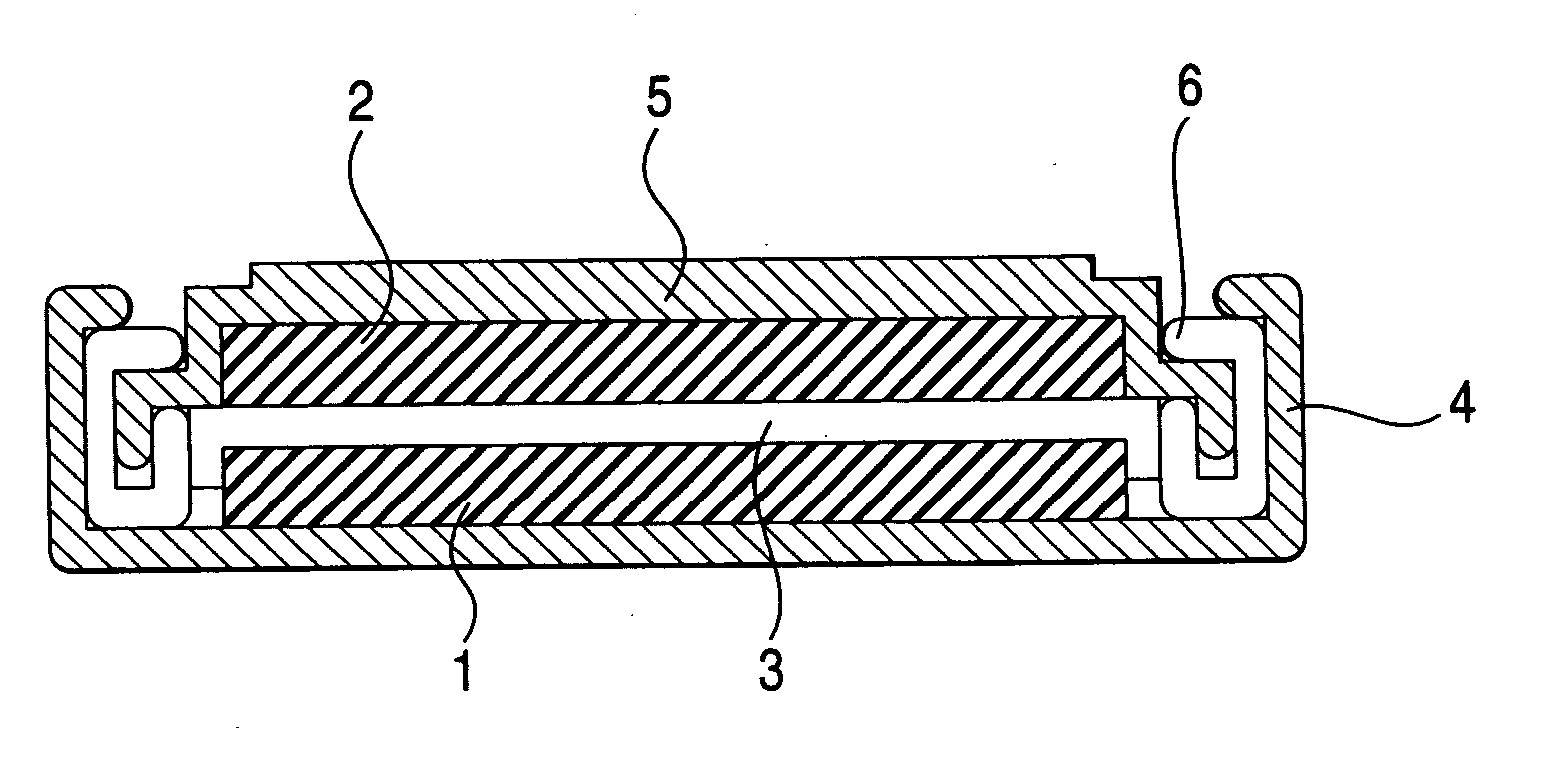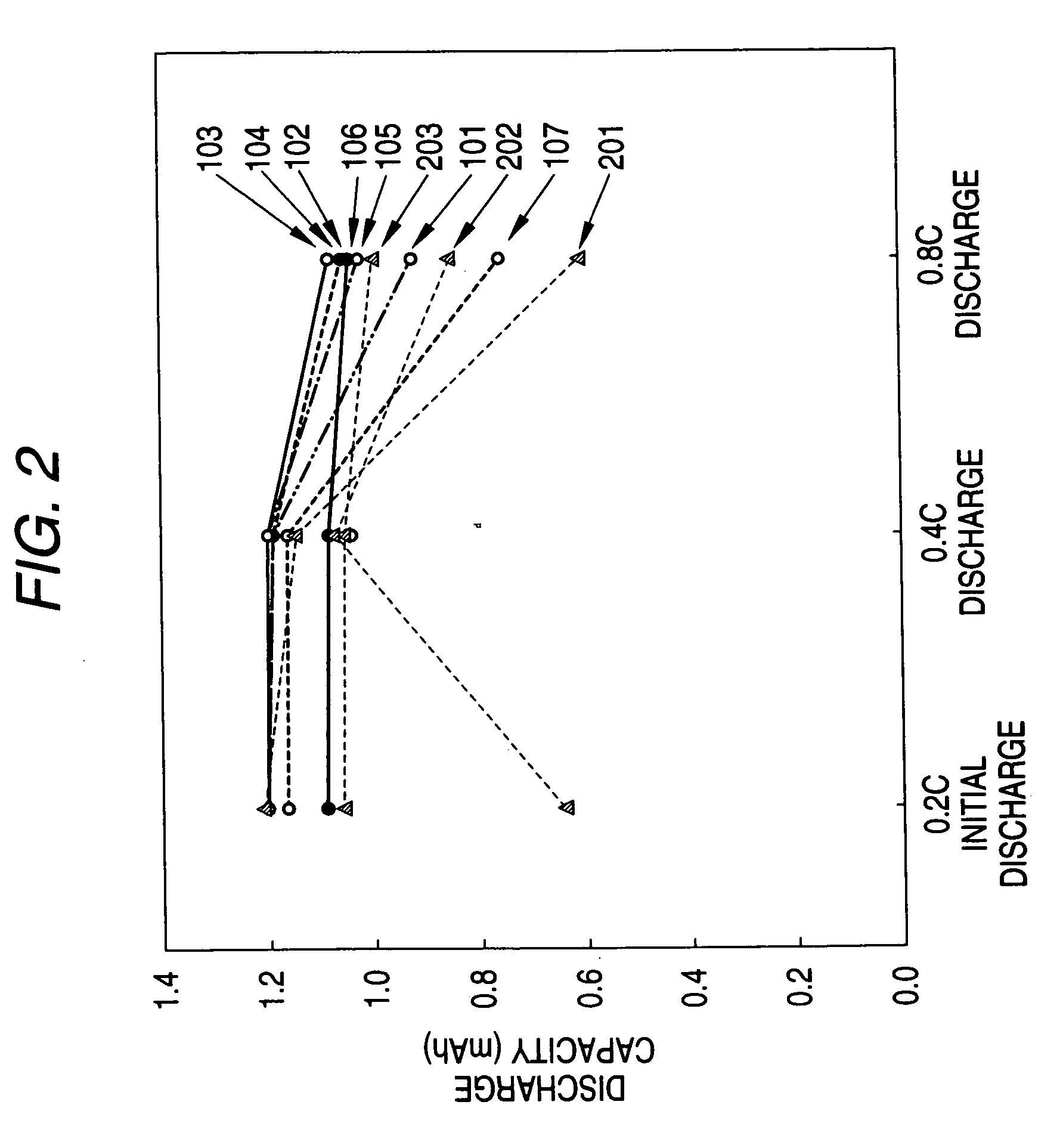Non-aqueous electrolyte battery
- Summary
- Abstract
- Description
- Claims
- Application Information
AI Technical Summary
Benefits of technology
Problems solved by technology
Method used
Image
Examples
example 1
[0047] 90% by weight of a lithium cobalt oxide (Li2CoO2) powder, 2% by weight of a carbonaceous material, as a conducive material, obtained by calcining a carbon black in the argon atmosphere at 1,400° C. (DBP oil absorption: 200 ml / 0.1 kg) for 48 hours, 3% byweight of graphite as a conducive material and 5% byweight of a polyvinylidene fluoride as a binder were mixed with N-methylpyrrolidone as a solvent with stirring to form a slurry which was then spread over an aluminum foil having a thickness of 20 μm and dried and pressed. The positive electrode sheet thus obtained was then cut into a circle having a diameter of 15 mm to prepare a positive electrode 1. The content of an active material in the positive electrode 1 was 7.91 mg.
[0048] 90% by weight of Li4 / 3Ti5 / 3O4 powder as a negative active material, 5% by weight of an artificial graphite as a conducive material and 5% by weight of a polyvinylidene fluoride were mixed with an N-methylpyrrolidone solution to obtain a slurry whic...
example 2
[0053] Since-the content of active material in the positive electrode and the negative electrode were 7.91 mg and 6.29 mg, respectively, the ratio of discharge capacity of positive electrode to negative electrode was 1.052. An electrolyte having 2.0 mol / L of lithium tetrafluoroborate (LiBF4) dissolved in 1-ethyl-3-methyl imidazolium tetrafluoroborate (EMI BF4) was prepared. The molar ratio of lithium salt to molten salt was 0.34. A non-aqueous electrolyte secondary battery was prepared in the same manner as in Example 1 except for the aforementioned conditions.
example 3
[0054] Since the content of active material in the positive electrode and the negative electrode were 7.92 mg and 6.30 mg, respectively, the ratio of discharge capacity of positive electrode to negative electrode was 1.051. An electrolyte having 2.5 mol / L of lithium tetrafluoroborate (LiBF4) dissolved in 1-ethyl-3-methyl imidazolium tetrafluoroborate (EMI BF4) was prepared. The molar ratio of lithium salt to molten salt was 0.44. A non-aqueous electrolyte secondary battery was prepared in the same manner as in Example 1 except for the aforementioned conditions.
PUM
 Login to View More
Login to View More Abstract
Description
Claims
Application Information
 Login to View More
Login to View More - R&D
- Intellectual Property
- Life Sciences
- Materials
- Tech Scout
- Unparalleled Data Quality
- Higher Quality Content
- 60% Fewer Hallucinations
Browse by: Latest US Patents, China's latest patents, Technical Efficacy Thesaurus, Application Domain, Technology Topic, Popular Technical Reports.
© 2025 PatSnap. All rights reserved.Legal|Privacy policy|Modern Slavery Act Transparency Statement|Sitemap|About US| Contact US: help@patsnap.com



